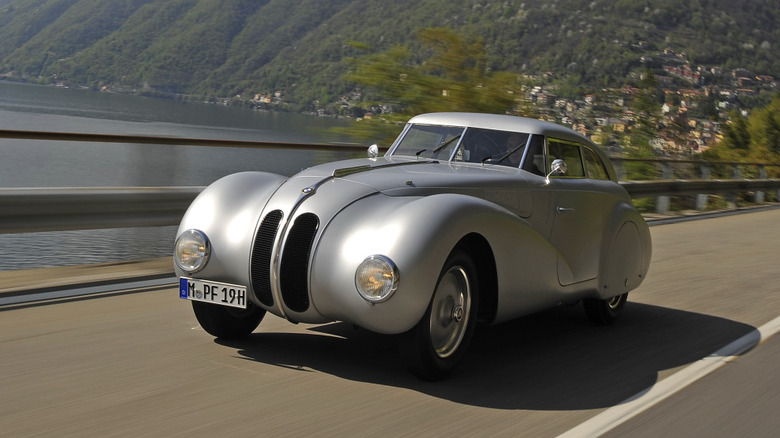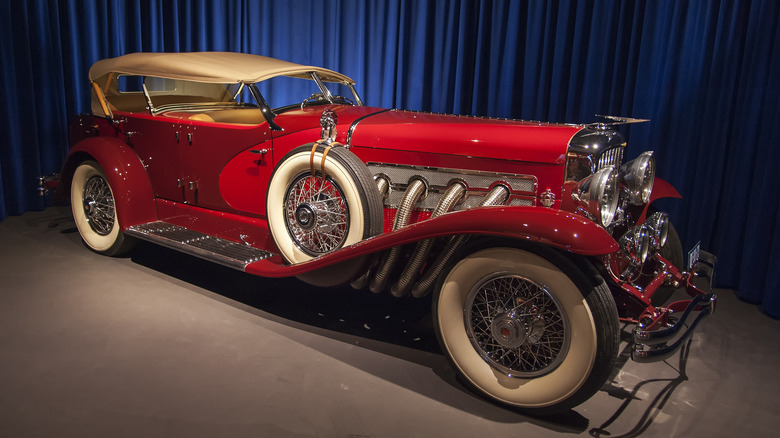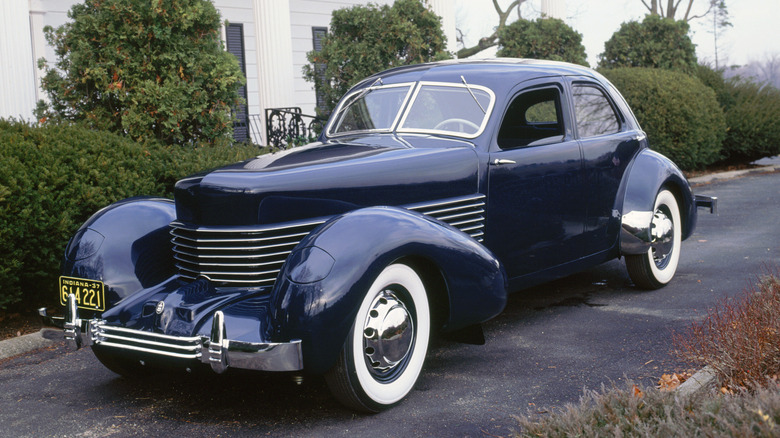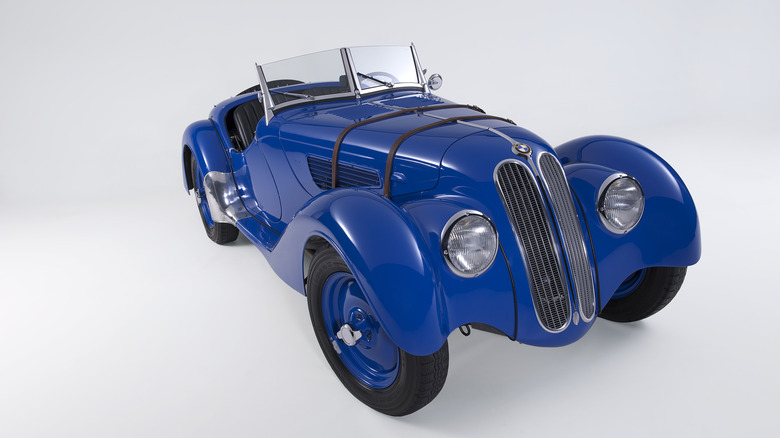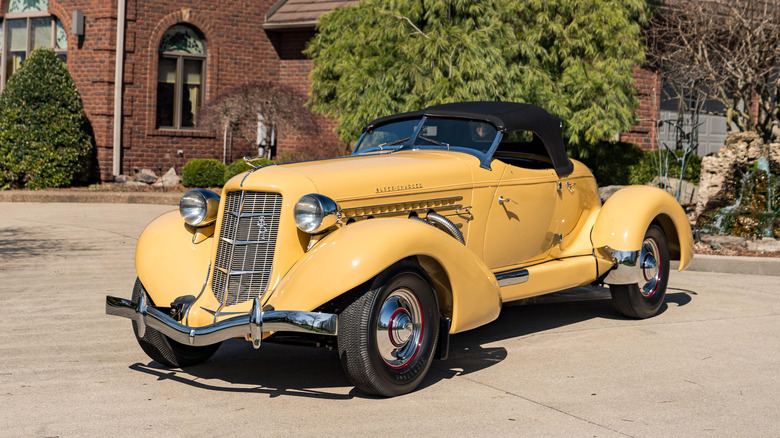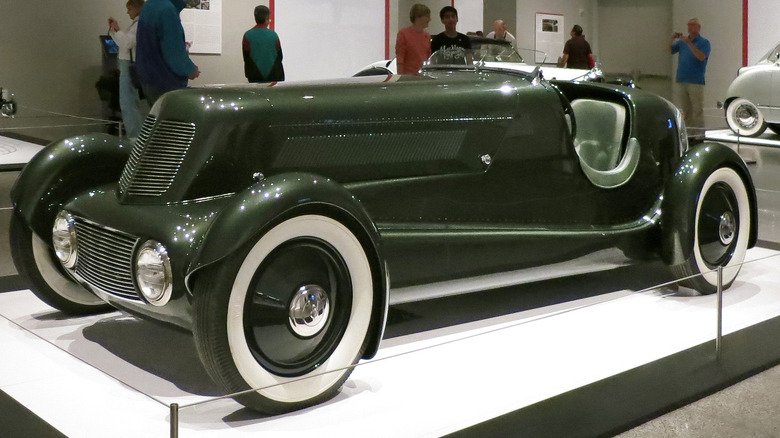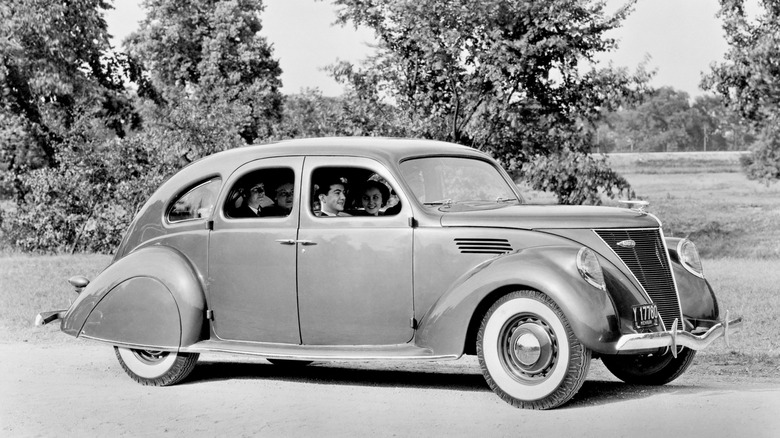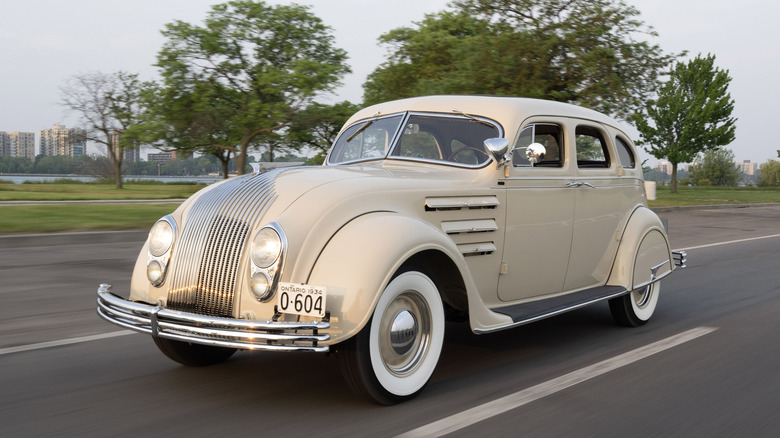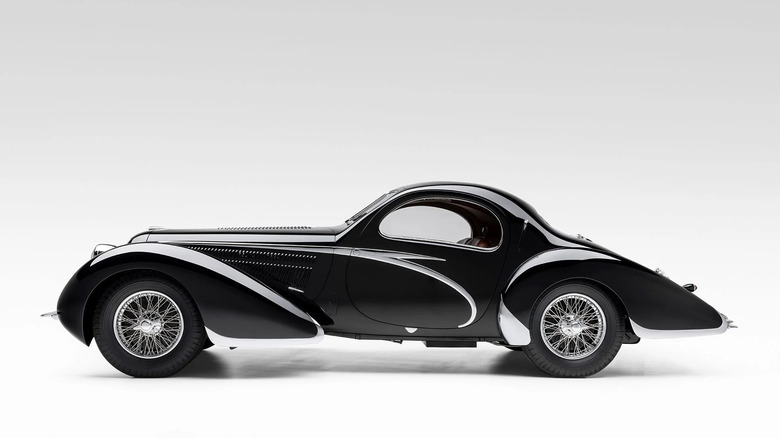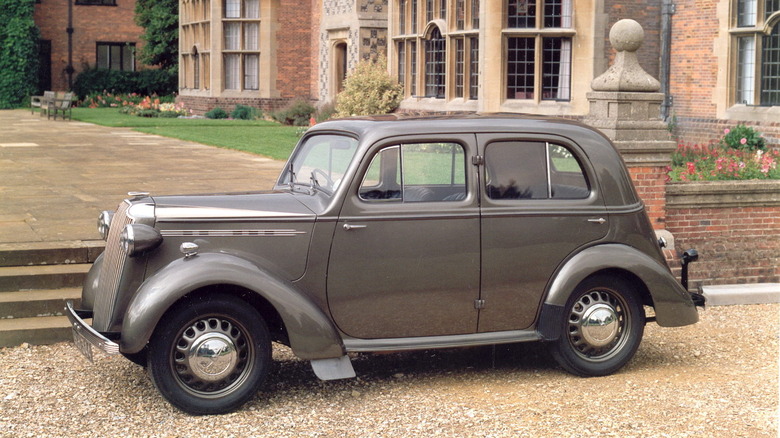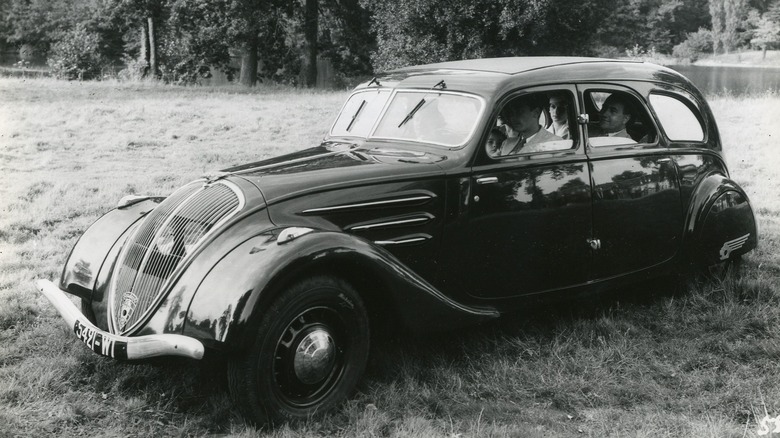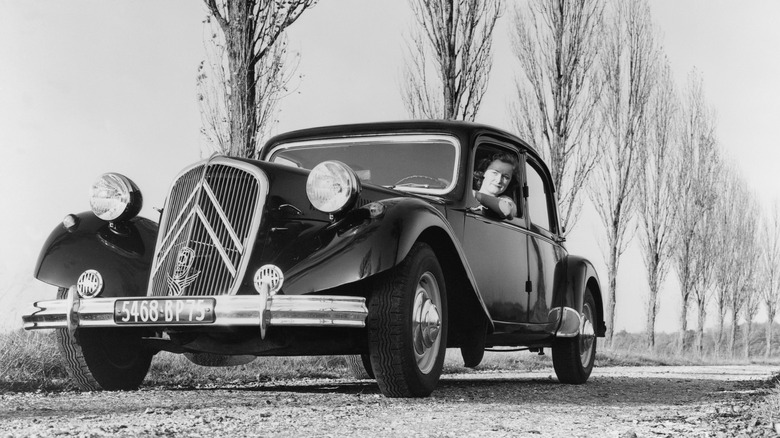12 Forgotten Cars From The 1930s That Are Worth Another Look
The 1930s were a period of great turmoil. The Great Depression led to massive unemployment, poverty, and general hardship. Adolf Hitler rose to power in Germany and prepared for WWII. The Hindenburg Disaster ended the airship era and instilled fear of air travel into the public.
You may assume that the auto industry also stagnated significantly, but the opposite was true. Some of the biggest automotive innovations that are still used today were launched during the 1930s. Hydraulic brakes. Synchromesh transmission. Unibody construction. Independent suspension. Streamlined, aerodynamic design. Speed also went up — the 100 mph barrier was broken by many vehicles at that time.
Despite this, there are many forgotten cars from the 1930s that deserve more attention. Some looked just damn cool, others reshaped the industry with innovative solutions and technologies. Either way, these 1930s cars are worth another look — this piece will uncover some true automotive gems that you might not know even existed!
Duesenberg Model J (1929 to 1937)
Before the Second World War, if you wanted the most luxurious and advanced automobile, you'd go for the Duesenberg Model J. Elegantly designed, with a particular focus on quality and craftsmanship, the Model J was the American counterpart to Rolls-Royce. Still, the Model J was also a technological tour de force, with pioneering hydraulic brakes and a straight-8 engine.
Ah, yes, the engine. The 7.0-liter beast with 265 hp, designed by Fred Duesenberg, could propel this luxury barge to 116 mph. During the 1930s, this was supercar territory. But the power was only a part of the story. The engine was a DOHC (Dual Overhead Camshaft) design, with four valves per cylinder, which was space-age tech for the time. Refinement was crucial, too — the engine needed to be buttery smooth. So, apart from using counterweights and oversized bearings, Fred opted for vibration dampers filled with mercury. It's this attention to detail that makes us sad the Duesenberg Motors Company no longer exists.
In 1932, a supercharger bumped the output to 320 hp! Impressively, 0-60 took 8 seconds, despite the manual transmission having only three speeds. Top speed: 129 mph. Peek inside, and the stunningly plush interior further strengthens the car's grand-touring pretensions. You'll see no plastic in the cabin — just leather and wood everywhere. Unsurprisingly, with a price of $13,000, the Model J was very expensive — that's almost $300,000 in today's money! Duesenberg only made 480 examples, of which 36 were supercharged, making the Model J a rare sight these days.
Cord 810/812 (1936 to 1937)
The Cord 810/812 is known as the "coffin nose" car, which, frankly, is an insult to its gorgeous looks. The clean and elegant design is a polar opposite of the heavily decorated Model J. You'll see no spare tire on the Cord 810/812. No unnecessary chrome details. Just a revolutionary, streamlined design, packaged in beautiful proportions. The perfect example of Art Deco coolness.
Cord went to great lengths to achieve such a streamlined design. Yes, those are hidden headlights you are seeing there. But more than that, it's the front-wheel-drive layout, which Cord pioneered in the 1929 L-29. The lack of a driveshaft allowed that amazing low-slung design — the 810/812 truly looked like they came from the future.
Developed as the "baby Duesenberg" after the Great Depression hit in 1929, the 810/812 was also equipped with a more compact 4.7-liter V8 engine from Lycoming. It made 125 hp and was exclusively paired with a four-speed manual transmission. A supercharged version was also available, producing 170 hp and up to 273 lb-ft of torque.
The Cord 810/812 didn't just look futuristic — it also incorporated advanced technologies, like variable-speed windshield wipers and a built-in radio. Unfortunately, that wasn't enough for market success. The 810/812 cars were unreliable, but more than that, Cord couldn't raise enough capital to meet its production goals. So, instead of producing 1,000 models monthly, the company made around 3,000 810s and 812s, before ceasing to exist as a company.
Mercedes-Benz 500K/540K (1934 to 1941)
American automakers produced some amazing automobiles during the 1930s, but German manufacturers weren't standing still. Case in point — the Mercedes-Benz 500K, an attractive grand tourer that predated Merc's pièce de resistance, the 300 SL Gullwing. With an understated, elegant design and potent straight-8 engine, the 500K was one of the most impressive cars of its era.
Merc's engineering prowess is everywhere in this vehicle. The 5.0-liter engine produced 100 hp, but a Roots supercharger bumped the output to 160 hp. The best part — the driver could engage the supercharger via a switch. Yup, like driving modes in today's cars! If you ever needed all 160 hp for overtaking, pressing the pedal to the metal engaged the supercharger.
Later, Mercedes-Benz introduced a larger 5.4-liter straight-8 with 115-180 hp and 318 lb-ft of torque, which allowed a top speed of 105 mph, and a 0-60 sprint of 16.4 seconds. Interestingly, the 500K was one of the early cars with a fully synchronized five-speed transmission. A fully independent suspension for better driving dynamics and comfort was also implemented, alongside servo-assisted hydraulic brakes.
Inside, Mercedes-Benz opted only for the best materials. The dashboard featured a symmetrical Art Deco design with the instruments placed in the middle, which looked exquisite.This isn't surprising for a car that sold for $10,780, or around $250,000 in today's money.
BMW 328 (1936 to 1940)
With Mercedes-Benz establishing authority in the European luxury segment, you are probably wondering what BMW was doing during the 1930s. As you'd probably guess, they were focusing on the driving experience part. BMW wasn't chasing high horsepower figures. Instead, it went the "lightness is everything" route with the 328. Weighing only 1,720 pounds (780 kg), BMW's roadster offered a sensational driving experience. For context, the Mercedes-Benz 500K weighed 5,070 pounds with the body attached!
Weight distribution also played an important role in the 328, and so did aerodynamics. BMW's engineers even meticulously tuned the chassis to enhance roadholding. Hardly surprising, because they wanted to beat the mega-powerful supercharged machines of 1930s racing. They achieved exactly that at the 1940 Mille Miglia. In fact, the 328 was one of the most successful racing cars of the period.
The 328 was an early example of BMW's iconic inline-6 engines. The 2.0-liter unit made 80 hp, which seems minuscule. Still, thanks to the lightweight construction and wind-cutting body, the 328 Roadster could pass 100 mph. Imagine how fast the 136-hp version that conquered the Mille Miglia could go!
Can we also talk about how beautiful this car is? The body is simple and streamlined, with organic curves giving the 328 Roadster soul and character. Yes, the oversized kidney grille reminds us of today's M3 and M4. However, in this case, it gives the 328 Roadster a whimsical vibe, which suits the fun-driving character.
Auburn 851/852 Speedster (1935 to 1936)
America also had a lightweight sports car to compete in the 1930s. Made by the Auburn Automobile Company, under the ownership of Cord, the 851/852 Speedster was a stylish, fast roadster that people lusted after. Brutish yet elegant, this two-seater sports car was Art Deco in its finest form. Muscular at the front, and with a boat-tailed rear end, the 851 Speedster is one of the finest works of Duesenberg's designer Gordon Buerhig. No wonder it was very popular among the Hollywood crowd.
Hiding under the long bonnet is a 4.8-liter Lycoming straight-8 engine, replacing the V12 in the previous-gen Auburn cars. In naturally aspirated form, it produced 115 hp, but like most sports cars of the era, a supercharged option with 150 hp was also available, enabling a top speed of 102.5 mph. That's similar to its closest rival, the BMW 328. Auburn's sports car wasn't as lightweight, though, weighing around 3,400 pounds. Still, it was light for a 1930s performance car with such a big engine.
Unfortunately, the Auburn Automobile Company ceased to exist after Cord, its parent company, fell in 1937. The 852 Speedster, sold in 1936, was the company's last vehicle, so you could say they went out with a bang. Although unknown to many enthusiasts, these sports cars are sought-after classics. For instance, a clean 1935 851 Speedster was sold for $456,000 at Bonham's auction, though prices are now nearing $1 million.
Ford Model 40 (1933 to 1934)
The Ford Model 40 is surely not as handsome as other entries on this list. It's also not nearly as powerful. But that doesn't make it any less significant. In fact, you could argue that this was the Mustang of the 1930s — an attainable sports car for the masses. Like Ford's legendary muscle car, the Model 40 also came with a V8 engine, replacing the inline-4 in previous models.
The move enabled the company to put eight cylinders in smaller bodies and streamline the styling, compared to the more prominent straight-8 engines of the era. It was also cheap, designed specifically for mass-market deployment. Ford's first V8 proved so popular, that the company stopped selling four-cylinder cars from 1935.
Crucially, the flathead V8 enabled real hot-rod performance, extracting 85 hp from a 3.6-liter capacity using a Stromberg two-barrel carburetor. For an entry-level sports car, that was plenty. A three-speed manual was the only transmission on offer. Even today, the Model 40s are very popular among hot-rod enthusiasts, with the car's 2,550-pound weight being particularly attractive for extracting more performance.
Perhaps the best Model 40 is the bespoke 1934 Edsel Sport Special Speedster. Its streamlined front end, with the low-positioned headlights, looked much more futuristic. Meaner, even. The brainchild of Edsel Ford, this special model also featured some advanced engineering, like a custom-welded tubular frame and aluminum coachwork crafted by the company's aircraft division. The result — a weight of just 2,100 pounds. The engine was also tuned to 100 hp, and the suspension was lowered for better roadholding.
Lincoln Zephyr (1936 to 1942)
Ford's compact V8 cars were more than good enough for most people during the 1930s. Still, if you wanted more luxury in your life, Ford's luxury division, Lincoln, offered the sleek and elegant Zephyr. With its sharp, V-shaped nose, flowing wheel arches, and small windows, the Zephyr oozed grace and luxury. Meanwhile, the huge grille, teardrop-style tail and small, curved windows added a dash of sportiness. Overall, it's undoubtedly one of the best-looking cars of its era, with aerodynamics playing a big role in the design.
Indeed, the Zephyr was a powerful car, despite being the company's first foray into the entry-level luxury sector. Lincoln used a 4.4-liter V12, which was derived from Ford's flathead V8, though with a tighter 75-degree cylinder bank angle. It produced a healthy 110 hp. The engine was paired to a three-speed manual transmission, with synchromesh second and third gears. It was enough for a top speed of 90 mph — not bad for a 1930s entry-level luxury car. Still, Lincoln upgraded the Zephyr to a 4.8-liter V12 in 1941, which made 120 hp.
The Zephyr was advanced in other areas, too. It's one of the earliest cars with a unibody construction, which reduced the weight to 3,375 pounds. This also allowed for lower ingress and egress, helping the Zephyr become one of the best-selling cars in the U.S. WWII unfortunately forced Lincoln to halt production in 1942, though a restart in 1946 brought an even more powerful, 5.0-liter V12 with 130 hp.
Chrysler Airflow (1934 to 1937)
Streamlining was the driving force behind the design of most 1930s cars. Heck, Chrysler even developed a car around aerodynamics, called the Airflow. And the automaker went to great lengths, building a wind tunnel to lower the drag as much as possible. The result: a fluid, flowing body that the industry has never seen before.
The Airflow was also the first car to feature a unibody construction, which helped Chrysler lower the vehicle. This was crucial to enable low drag but also helped with handling and comfort. Hiding behind the Airflow's oversized grille was a 4.9-liter flathead V8, good for 122 hp and 250 lb-ft of torque. Thanks to the slippery body, it propelled the car to 100 mph, similar to sports cars from the era.
But the innovations didn't stop there. Chrysler also positioned the engine over the front axle, which created more space inside. Furthermore, the Airflow had a safety glass windshield. Interestingly, Chrysler showcased this feature with a public, Cybertruck-like stunt, where a pitcher hurled a baseball and the glass didn't shatter. The company even went as far as dropping the Airflow from 110 feet to demonstrate the frame's sturdiness.
Unfortunately, the revolutionary design wasn't enough for market success due to a variety of factors, including a smear campaign by GM, which claimed the Airflow was unsafe. This was, of course, totally blown out of proportion. Still, it served its purpose — Chrysler killed the model after only three years on the market.
Talbot-Lago T150 C (1936 to 1939)
The Bugatti Type 57 SC Atlantic Coupé is perhaps the most attractive automobile from the 1930s, and a true automotive icon. But the nearly forgotten Talbot-Lago T150 C-SS by coachbuilder Figoni et Falaschi looked almost as good, serving as one of Art Deco's finest four-wheel sculptures ever made.
This two-seater sports car looks gorgeous from every angle, with masterfully crafted fluid curves blended into perfect proportions. There are no straight lines anywhere to be found — just beautiful, organic shapes. You could only imagine the crowd's reaction at the 1934 Paris Salon, when Talbot-Lago showcased the first prototype.
Created by Antonio Lago, a talented Italian engineer that got hold of Talbot a year earlier, the T150C was developed not only to wow audiences but also to win races. So, Lago opted for an advanced 4.0-liter inline-6 engine with hemispherical combustion chambers, resulting in 140 hp. Top speed: 115 mph. Still, a high-compression version with 165 hp was available to buyers. All T150 Cs were equipped with a pre-selector four-speed gearbox.
Talbot-Lago built only about 20 C-SS units and fewer than 50 of the regular T150 C, making it a truly rare item. Fortunately, mint examples, like this 1938 T150 C Lago Spéciale Figoni et Falaschi Teardrop Coupé currently on auction at Broad Arrow, help keep this terrific automobile alive.
Vauxhall 10-4 (1937 to 1940)
The Vauxhall 10-4 wasn't a limited-production wonder, and it looked bland next to the streamlined sculptures of its era. Still, if it wasn't for WWII, the 10-4 might've had its VW Beetle moment. It was the result of Vauxhall's million-pound investment to design a budget-friendly, yet technologically advanced car for the masses.
The 10-4 was the first British car with a unibody construction. It had hydraulic brakes. Front independent suspension. Synchromesh gears. Vauxhall even soundproofed it extensively to counteract the increased vibrations from the unibody construction. The 10-4 had every advanced feature available during the 1930s.
Of course, its 1.2-liter inline-4 engine wasn't the most powerful around. With only 34.5 hp to play with, it could only propel the 10-4 to 60 mph and accelerate to 50 mph in 18 seconds. However, the 10-4 cost just £159, or £9,335 in today's money, making it quite the bargain. It was also good for 36-42 mpg, an outstanding figure for the era.
Consequently, Vauxhall's car for the people was a huge success. The company sold 10,000 units during the first five months, and 42,000 until production ceased in 1940. This short production run, hindered by WWI, is probably the reason why the 10-4 is undeservedly forgotten today.
Peugeot 402 (1935 to 1942)
You'd expect that the French auto industry produced some of the most stunning Art Deco automobiles, and you'd be right. After all, the Art Deco movement originated in France, and the Peugeot 402 has this style written all over it. Sleek and graceful, Peugeot's 1930s family car is a sight to behold. It also has some quirky French design elements, like the hidden headlights behind the grille. Coachbuilt versions, such as the dazzling 402 Légère, were also available to attract deep-pocketed buyers.
Propelling Peugeot's family car was a 2.0-liter inline-4 with 55 hp, connected to a three-speed synchronized gearbox. Although not very potent, it was still good enough for a top speed of 75 mph, thanks to the aerodynamically efficient body. For a 16-foot-long vehicle that could seat six people, this was quite an achievement in its era. The 402 was also the first-ever production car with a diesel engine. The 2.3-liter unit launched in 1938 for buyers who wanted higher fuel efficiency, though not many were sold. Overall, though, the 402 was one of the best-selling cars in Europe during the interwar period, with Peugeot selling around 75,000 units.
Citroën Traction Avant (1934 to 1957)
The Peugeot 402 had a good run, but the Citroën Traction Avant was the more innovative and successful car. Yes, its body isn't as streamlined, but do you notice the low stance? It's all thanks to the groundbreaking monocoque structure and front-wheel-drive configuration, seen for the first time together in the Traction Avant.
Citroën's innovations didn't stop there. The Traction Avant also had hydraulic brakes and independent suspension on all four wheels. Overhead valve engine with removable sleeves. Rack and pinion steering (from 1936). No wonder they called it the car with 100 patents. Weighing only 2,546 pounds (1,100 kg), the Traction Avant was incredibly light, too.
The result — probably the most comfortable, best-handling car from the 1930s. Its 1.9-liter four-cylinder, good for only 57 hp, was nothing to write home about, but the way this car ate miles was unmatched. Citroën also offered the Traction Avant 22 — a high-end luxury version with a 3.8-liter V8 that produced 100 hp and could reach 87 mph, alongside a 2.9-liter inline-6 model with 77 hp.
In 1954, the French automaker even pioneered its revolutionary hydropneumatics suspension in the Traction Avant 15 Six H, which then helped its successor, the DS, become an automotive icon. With that many innovations and engine options, the Traction Avant had a very long run. Citroën ended production in 1957, with 760,000 units sold.
